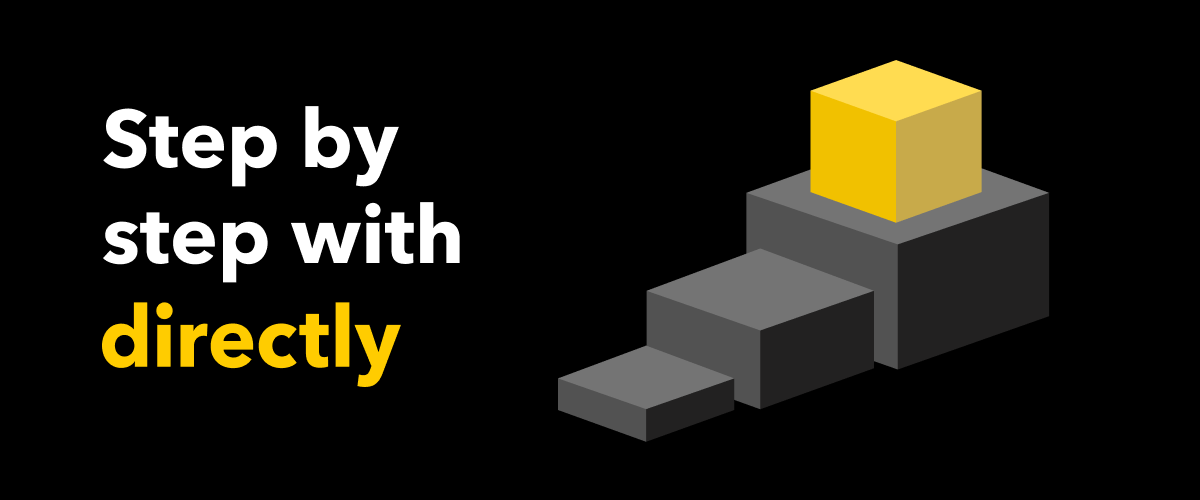Around here, we talk a lot about trust. Customer service leaders are increasingly looking to the gig economy to provide customer service flexibility and scale in a way that traditional BPOs and contact centers with fixed staff simply can’t.
The biggest barrier is trust. Leaders need to fully trust the people who engage with their most valuable asset — their customers. In a recent blog series, we explain why some of today’s leading companies trust Directly on-demand experts — who have broad technical expertise along with deep first-hand experience with those companies’ products and services.
Ultimately, that trust between our clients and our expert network is earned through performance. And as we begin working with new clients, the first step is a carefully designed proof of concept (POC). Each of our clients’ objectives are unique — and each POC targets specific needs/challenges, while fitting neatly within a company’s existing customer service architecture.
We start small — because our POC is the foundation for successful growth, scale, and CX transformation. Using lean methodology, we systematically scrutinize, measure, and optimize the performance of the POC. It’s where we start building confidence — and a long-lasting partnership based on trust. Here’s how it works.
Step by step: How we build a Directly proof of concept
Before we officially get started with any new client, our team starts gathering the information we need to build a successful program. We partner with the business and technical stakeholders to better understand the industry and company’s product line, identify the pain points of the support organization, and explore how a network of on-demand product and technical experts can solve these challenges.
We also demo our platform and interface. We show how we identify, recruit and onboard experts who will ultimately serve as on-demand agents for their customers. We review the controls for how different issues might be pushed to those experts. Additionally, we explore how our platform can plug into their existing customer service stack, how it can complement an omnichannel support system, and how it can easily scale to meet global expansion initiatives.
Step 1: Analyzing business impact
We start by performing a ticket analysis to determine the potential impact we can have on the business and start to understand the type of issues customers face.
To do this, our prospective clients provide an export of anonymized recent customer service tickets. Our proprietary NLU (natural language understanding) model groups related questions and utterances based on language patterns. This process yields a visualization of every common customer “intent” in the form of a cluster map, revealing the top issues facing the contact center.
Then, our team analyzes the volume of specific intents and determines the best action that could be taken for each customer issue — and when it would be a great fit for Directly experts versus the traditional contact center.
Step 2: Strategic alignment
The next big milestone is to ensure we have strategic alignment. We review the results of our ticket analysis, which provides tangible recommendations that help our prospective customers visualize how our platform and on-demand experts might plug into their existing customer service ecosystem. And we discuss key questions such as:
– What are your key business strategies that relate to the customer service organization?
– What are the customer service pain points you’re experiencing?
– Does seasonality affect your customer service?
– What are your primary support channels? And what technologies do you deploy in your customer service stack?
– What are the key metrics you use to measure customer service performance?
– What kind of return on investment do you expect in the short-, mid-, and long-term?
Once we’ve gathered the information we need, we head off to create the blueprint for what the POC will look like.
Step 3: Designing the solution
The next big step is to start defining the specific and focused business problem we want to solve in the POC. Because this is a proof of concept, we are careful to limit the scope.
Using the ticket analysis, we define a focused topic area where we think experts could have the most immediate impact. We may also focus on one specific customer service channel — e.g., email, messaging, or a website support form — where we will tap experts for help.
Once the opportunity is defined, our engineers design the system architecture. And in parallel, we determine how we’ll recruit and onboard experts that are best suited to provide great customer service.
Then, we create the proposal that describes the proof-of-concept project in great detail, including the full ticket analysis, the business opportunity, and the technical solution. Like any proposal, it also includes the cost and schedule for the project, along with getting alignment from all stakeholders on how we will measure the ROI of the project. These success metrics will drive how we expand the program and partnership beyond the POC.
When the proposal is approved by all parties, we begin to build.
Step 4: Building and configuration
Now it’s time for our solution architects to build the system. We also are actively recruiting, vetting, and on-boarding our client’s most knowledgeable users to join our expert network. The timeframe for this stage can vary based on the scope of the agreement and the complexity of our client’s ecosystem. Typically, it takes just a few weeks before we’re ready to test and launch.
Step 5: Testing & launch
Before we launch, we push our solution into a sandbox for testing. We make sure that the technical integration is working correctly, and that questions and metadata are flowing through the system as expected. Once all stakeholders approve, we push the proof of concept live.
Step 6: Optimization and evaluation
In the early hours and days following our launch, our team closely monitors performance. We’re scrutinizing everything, from making sure questions are properly being routed to experts and how quickly experts are responding, to how tickets are being resolved and how that data is being captured. We’re rapidly and continuously optimizing as any opportunities to improve are identified.
After the first few weeks, the performance becomes fairly consistent and predictable across the network. In the weeks that follow, we monitor how the POC is performing against the metrics we defined.
Beyond the proof of concept: Expansion
After our initial project has been live for a month or so — with performance data telling us how successful our proof of concept has been — we partner closely with the client to identify opportunities to grow the program to drive substantial ROI in the short-term, while discussing a phased growth plan to deliver broader and more sustainable impact in the long-term.
In our next post, we’ll explain how we work with our clients to expand beyond the POC and the specific performance metrics we use to guide our decisions. So, make sure to follow us on LinkedIn and Twitter, and join our mailing list to be notified about our new posts.
Why Directly?
Directly delivers world-class customer service for leading Fortune 500 brands. Captive and outsourced contact center models increasingly can’t keep up with customer service demands, while self-service is only effective at deflecting simple contacts. With Directly, we help you troubleshoot a wide range of technical issues using on-demand experts and best-in-class AI technology. Customers like Microsoft, Samsung, and Airbnb partner with Directly to reduce contact center volume up to 40%, boost CSAT up to 20%, and save millions per year. Contact us to set up a demo today.



